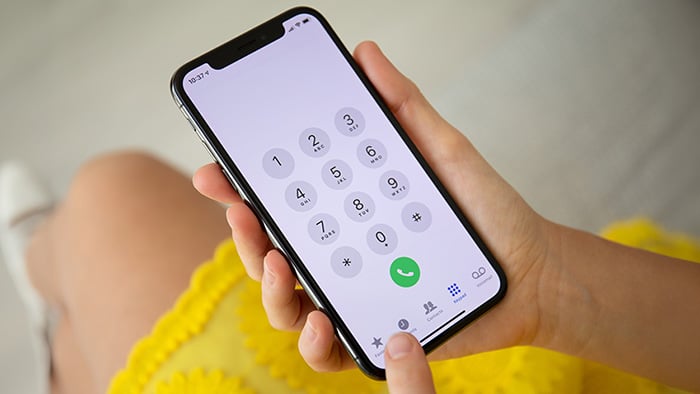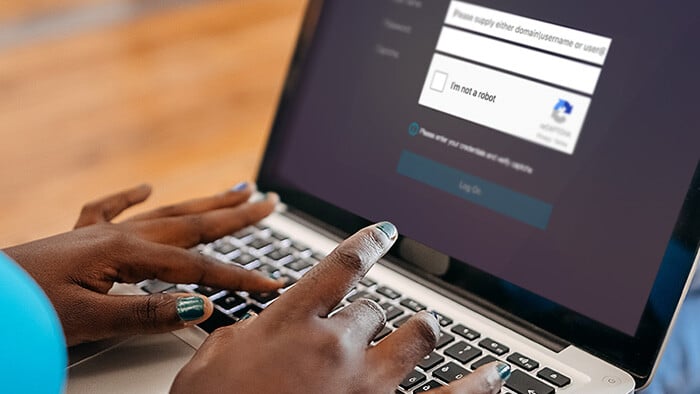What is DNS poisoning?
DNS poisoning, or DNS cache poisoning, is a cyberattack where a hacker alters a DNS (Domain Name System) entry to redirect you to a malicious website that’s posing as a legitimate one. Your browser unknowingly visits the fake website and then caches the malicious IP address for future visits.
These altered DNS entries lead to a hacker-designed website that appears like the intended destination. The sites can potentially steal sensitive information, like passwords or financial data, or install worms or viruses onto your device.
 DNS poisoning redirects users to a malicious site.
DNS poisoning redirects users to a malicious site.
The Domain Name System refers to the system that converts a domain name (like avast.com) into the IP address your browser needs to access a website. When you first visit a website, your browser communicates with a DNS server, which functions as an intermediary between your device and the website’s authoritative nameserver. The DNS server then caches the IP address for faster access on future visits.
DNS spoofing is a broad category of cybersecurity attacks where hackers alter DNS records to lead to fake and malicious websites.
DNS poisoning is a type of DNS spoofing. The spoofed DNS entry is cached by your web browser, which “poisons” your DNS cache. Whenever you try to access the legitimate website, your browser will continue to refer to the spoofed DNS entry.
How does DNS poisoning work?
DNS poisoning exploits vulnerabilities in your DNS server’s caching system. Normally, your browser caches (saves) the IP addresses of websites for faster access in the future. Through DNS poisoning, your browser will unwittingly cache spoofed DNS entries that lead to malicious sites.
DNS poisoning is executed in a variety of ways. Here are some common hacker ploys:
-
Man-in-the-middle attack (MITM): The hacker gets between your browser and the DNS server, and intercepts both. They execute a DNS cache poisoning attack on your device, while server poisoning the DNS server. This results in you being redirected to a malicious site controlled by the hacker.
-
DNS server hijacking: The hacker alters a DNS server to reroute all requests to a spoofed website. Once the fake DNS entry is inserted into the server, every user querying that server for a specific domain will be lead to a malicious site under the hacker’s control.
-
DNS poisoning via phishing: The attacker sends phishing emails containing links to URLs that trigger DNS cache poisoning. Banner ads and images can also be used as an attack vector. Once poisoned, your browser will take you to imposter sites that could contain malware, like a virus.
DNS poisoning involves your web browser’s cache but there are more ways hackers can exploit DNS. Here are some other DNS spoofing ploys:
-
Impersonating a server: You type in a web address and your DNS requests the IP address of the site’s server. If a hacker responds to the request before the legitimate server, they could direct you to a malicious website.
-
DNS flooding: Hackers might flood a DNS server with requests and falsified responses, overwhelming it. Gradually, they overtake the root domain and the entire website.
-
Port Scanning: Through port scanning, hackers look for open or vulnerable ports on DNS resolvers to exploit a network or organization. By exploiting these weaknesses, hackers can inject false DNS entries and tailor attacks.
The impact of DNS poisoning
DNS poisoning is a tool — the real damage is done through the pharming websites associated with spoofed DNS entries. Once DNS poisoning has taken place, you could be led to these malicious sites that introduce a host of security problems.
From these websites, hackers can infect your device with a variety of malware, like a trojan or virus. They can trick you into giving up financial and personal data and use it for theft or doxxing.
In September 2021, the International Cyber Benchmarks Index reported that 72% of organizations had experienced at least one DNS attack in the past year, and of those, 33% had experienced DNS cache poisoning.
Signs of DNS poisoning
If you’re a website owner, some signs of DNS poisoning include a change in patterns of DNS requests or user complaints (e.g., reporting redirection or access issues). For individuals, some signs include being redirected to unfamiliar websites or seeing browser warnings about suspicious certificates when visiting websites.
How to help prevent DNS poisoning
Individuals can help prevent DNS poisoning by using a VPN, practicing online safety, changing DNS settings, and periodically clearing the DNS cache from devices — and scanning for malware in case they unwittingly fall victim to an attack. Website owners can help prevent DNS poisoning attacks by enabling DNS security extensions, configuring trusted DNS servers, and training employees.
How individuals can help prevent DNS poisoning
The average website visitor may be unaware of how to spot potential dangers that could lead to ransomware and other malware landing on their devices through DNS spoofing.
Here’s how you can help protect yourself:
Use a VPN
With a VPN, you can help avoid the vulnerabilities that lead to DNS cache poisoning. Like a DNS proxy server, a VPN uses private DNS servers. But a VPN will encrypt all your web traffic, including DNS queries. So if hackers intercept any sensitive data, it will be impossible to read, thwarting potential man-in-the-middle attack.
Whether you get a VPN for PC or a VPN for Mac, you’ll significantly boost your privacy and help keep your online traffic hidden from hackers, institutions, and other prying eyes.
 A VPN encrypts your online traffic, protecting it from hackers.
A VPN encrypts your online traffic, protecting it from hackers.
Practice online safety
Make sure you’re up to date with online best practices. Check that a website is safe before engaging with it and possibly clicking through to a fake site. Also, be careful once you’re on a page as a malicious site could try and get you to enter personal information or login details.
Clear DNS cache
By clearing your DNS cache periodically, you can clear fake DNS entries that take you to malicious websites. That’s because clearing your cache forces your browser or device to request new DNS records.
DNS cache poisoning is difficult to detect. Similarly, spyware relies on being inconspicuous in order to spy on your web activity. If you suspect an infection, learn how to remove spyware on a PC.
Change your DNS settings
Use a trusted DNS provider to help reduce the chances of DNS poisoning and certain other online threats like phishing. Some reliable providers are Google (8.8.8.8) and Cloudflare (1.1.1.1). You can update these in your device settings. For even broader protection, learn how to change your router’s DNS settings.
Scan your device for malware
Since it’s not always possible to prevent DNS poisoning, you should regularly scan devices to help detect a threat and minimize the damage done. A comprehensive virus removal tool can rid your device of viruses and other malware.
 Avast One antivirus scanning a laptop for malware.
Avast One antivirus scanning a laptop for malware.
To help keep malware off your devices in the first place, use our free Avast One software, which is available for PCs, Macs, Androids, iPhones, and iPads.
How website owners can help prevent DNS poisoning
Website owners need to put security measures in place to help prevent DNS poisoning from impacting visitors to their site.
Enable DNS security extensions (DNSSEC)
DNS was not designed with protection in mind. The system doesn’t require verification for responses to DNS requests. DNSSEC helps fill this security void by requiring an added verification step for DNS. It secures DNS queries with cryptographic signatures.
Choose a trusted DNS hosting service
If you own a website, the right DNS hosting service is integral for security — along with speed, performance, and scalability. Security standards can vary among different DNS hosting services, so do your research and decide what’s best for your website.
Employee training
For companies, training staff about cybersecurity best practices can help prevent social engineering attacks from being successful. Social engineering and other types of online attacks can lead to network vulnerabilities that could be exploited for DNS poisoning or even lead to data breaches.
Threat prevention teams need to remain on the lookout for IP spoofing and DNS spoofing, and use intrusion detection systems (IDS) to monitor traffic for unusual patterns. By staying updated with the latest security software and knowledge, they can help prevent attacks and mitigate damage if an attack occurs.
Protect your web traffic
With the right strategies, you can help avoid DNS poisoning and other hacker tricks. But supplementing good habits with a reliable VPN will vastly improve your online privacy.
Avast SecureLine VPN encrypts your web traffic to help keep your online activity, including DNS requests, hidden from hackers, your ISP, and websites. It also provides a secure connection to public Wi-Fi, which can be a hotbed for cyberattacks. Worry less about DNS poisoning and live your best online life with Avast.















